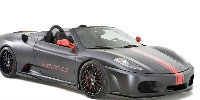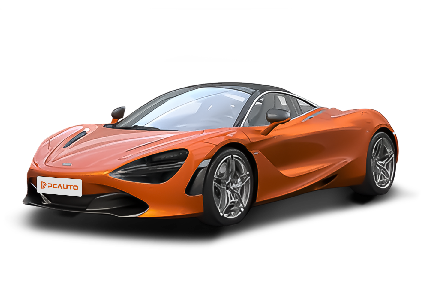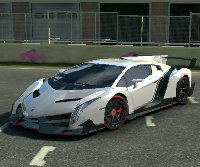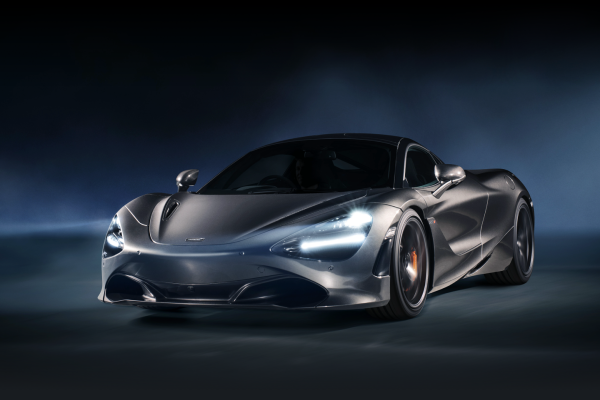Q
How many 720S are made?
The McLaren 720S is a head-turning supercar with a global production run estimated between 2,000 to 2,500 units—exact numbers are kept under wraps, but there's no denying its status as a high-performance benchmark. Its lightweight carbon fiber construction and beastly 4.0-liter twin-turbo V8 (cranking out 720 horsepower) speak for themselves. Over in Malaysia, the 720S has become a darling among collectors and enthusiasts, thanks to its rarity and blistering performance. Local allocations are tight, typically coming through official dealership channels.
Slotting into McLaren's Super Series lineup, the 720S may have seen successors like the even more hardcore 765LT push performance boundaries further, but it still holds a special place. What sets it apart? That perfect balance of daily-drivable refinement (well, as much as a supercar gets) and those iconic dihedral doors that never fail to draw a crowd.
For Malaysian buyers, beyond brand-new models, there's the occasional pre-owned gem or parallel-import option floating around. But here's the thing: always do your homework on maintenance history and warranty fine print to keep that British thoroughbred running in tip-top shape. McLaren's got a solid service network across Southeast Asia, with official centers in KL and beyond, so owners can rest easy knowing professional support is there when needed.
Special Disclaimer: This content is published by users and does not represent the views or position of PCauto.
Related Q&A
Q
How much horsepower does a 2019 McLaren 720S have?
The 2019 McLaren 720S is powered by a 4.0-liter twin-turbocharged V8 engine cranking out 720 horsepower—hence the "720S" in its name—and a meaty 770 Nm of torque. Mated to a 7-speed dual-clutch gearbox, this thing rockets from 0-100 km/h in just 2.9 seconds and tops out at 341 km/h. Performance-wise, it's an absolute beast.
Underpinning it all is the Monocage II carbon fiber monocoque chassis, which nails that perfect balance of featherweight construction and seriously beefed-up rigidity. Then there's the aerodynamics—total next-level stuff. The active rear wing and those wild dihedral doors aren't just for show; they work overtime to generate serious downforce at high speeds.
For Malaysian petrolheads, the 720S hits that sweet spot between track-ready weapon and daily-drivable supercar. Sure, our hot and humid climate can be tough on high-performance cooling systems, but McLaren's engineering team has that covered. This thing stays cool and composed, no matter what you throw at it.
And let's not sleep on the cockpit. It's all about driver ergonomics here, with a sharp digital instrument cluster and a slick infotainment system. So you're not just getting mind-blowing speed—you're getting luxury and tech to match.
Q
Who makes the McLaren 720S engine?
The McLaren 720S gets its heart from McLaren's own engineering team – specifically, a 4.0-liter twin-turbocharged V8 engine codenamed M840T. This powerplant is designed and built entirely at McLaren's UK production facility, really showcasing the brand's deep technical prowess when it comes to high-performance powertrains. The M840T cranks out 720 horsepower and 770 Nm of peak torque, and when paired with that 7-speed dual-clutch gearbox, it hurls the 720S from 0-100 km/h in just 2.9 seconds, with a top speed of 341 km/h. That's some seriously impressive performance. For Malaysian petrolheads, the McLaren 720S isn't just another supercar; it's a masterpiece of engineering. Its engine tech highlights McLaren's leading edge in lightweight materials and aerodynamics, and the car has built up a solid presence in Malaysia's luxury high-performance car market, earning plenty of love from local automotive enthusiasts. What's more, McLaren keeps refining its engine tech to strike that balance between performance and environmental responsibility – think efficient turbocharging systems and precise fuel management to boost fuel economy. That's especially crucial in a market like Malaysia, where a passion for high-performance cars goes hand-in-hand with growing environmental awareness.
Q
What is the interior like on a 2019 720S?
The interior of the 2019 McLaren 720S screams supercar from every angle. They’ve gone all-in on lightweight materials—think plenty of carbon fiber and Alcantara—without skimping on that premium feel. The seats? Wrapped in high-grade leather, they offer killer support, whether you’re bombing down a highway or attacking a set of twisties.
The center console is clean, driver-focused, and home to an 8-inch vertical touchscreen that handles Apple CarPlay and navigation like a pro. Then there’s that trick folding digital gauge cluster—it changes what info it displays based on your driving mode, adding a serious tech edge.
Storage space? Yeah, it’s tight, but let’s be real—when you’re buying a performance machine like this, cargo room isn’t exactly top of the priority list. One thing that really stands out is the "Monocage II" carbon fiber tub. It’s a smart move, cutting weight while beefing up rigidity—a setup you don’t see in every supercar.
For folks in Malaysia, the 720S holds up well in the heat. The AC cranks hard, and the seat ventilation works a treat. Just keep in mind, leather and Alcantara need a bit more TLC in that hot, humid climate to stay looking sharp.
Now, the 720S might not hit the same over-the-top luxury notes as some Italian brands, but where it really shines is in functionality and that laser-focus on the driver. You see that same philosophy across McLaren’s lineup, and honestly? It works.
Q
What awards did the 2019 McLaren 720S win?
The 2019 McLaren 720S racked up some serious hardware from big-name international awards thanks to its killer performance and stunning design. We're talking big ones here—like being named "Supercar of the Year" by none other than Top Gear, and scoring "Best Performance Car of the Year" from GQ magazine. Under the hood, this beast packs a 4.0-liter twin-turbo V8 that cranks out 720 horsepower and 770 Newton-meters of torque. That translates to a blistering 0-100 km/h sprint in just 2.9 seconds and a top speed of 341 km/h, really showing off McLaren's mastery when it comes to lightweight tech and aerodynamics.
For Malaysian petrolheads, the 720S story gets even more exciting with the track-focused GT3 version, which has been tearing it up in Asian motorsport events. Sure, local road conditions and regulations mean you can't quite uncage its full beast mode on public streets, but that doesn't stop it from being the stuff of dreams for legions of supercar fans. And let's not forget the engineering cred—its carbon fiber monocoque chassis and active suspension system have earned it plenty of respect from the tech heads too.
Q
What colors did the 2019 720S come in?
The 2019 McLaren 720S arrived in the Malaysian market boasting a range of classic and highly personalized color options, split between standard hues and exclusive customized finishes. The standard palette highlights McLaren staples like **Volcano Yellow**, **Senna Grey**, **Lantana Purple**, and **Onyx Black**. For those seeking something truly one-of-a-kind, McLaren Special Operations (MSO) opened the door to bespoke color choices – think head-turners like **Amethyst Black** or **Belize Blue** – tailored to satisfy the desires of discerning owners who crave a truly unique aesthetic.
As a high-performance supercar, the 720S’s color isn’t just about looks; it plays with the car’s striking lines, especially when paired with special paint techniques like metallic or matte finishes that enhance depth and dimension. Given Malaysia’s hot and humid, rain-prone climate, it’s wise for owners to opt for paint finishes with good weather resistance and to stick to regular maintenance routines to keep that showroom shine intact.
What’s more, McLaren’s color names often nod to the brand’s rich heritage and motorsport legends. Take **Senna Grey**, for example – a clear tribute to the incomparable Ayrton Senna. These little touches don’t just add character; they elevate the car’s collectibility and cultural significance.
Q
How much horsepower does the 2019 720S have?
The 2019 McLaren 720S is powered by a 4.0-liter twin-turbo V8 engine cranking out 720 horsepower – hence the "720S" in its name – and a meaty 770 Nm of torque. Paired with a 7-speed dual-clutch gearbox, this thing rockets from 0-100 km/h in just 2.9 seconds and tops out at 341 km/h. Performance-wise, it's an absolute beast. For Malaysian petrolheads, the 720S isn't just about raw power; its lightweight carbon fiber MonoCage chassis and active aerodynamics work together to boost handling and high-speed stability, making it a solid fit for our twisty local roads. What's cool is that despite its relatively modest engine displacement, the twin-turbo setup lets it punch way above its weight in terms of power delivery. This trend of small-displacement, high-output engines is becoming more common in modern supercars – it meets stricter emissions standards while still serving up that adrenaline-pumping driving experience we crave. Price-wise, the 720S sits around the RM1.5 million mark in Malaysia, firmly in the top-tier supercar league, but it still offers pretty good value for money compared to its direct competitors.
Q
How many gears does a 720S have?
The McLaren 720S is hooked up with a 7-speed dual-clutch gearbox (SSG), engineered to deliver quick yet smooth shifts—perfect for a high-performance supercar. The beauty of a dual-clutch setup here is that power delivery stays nearly uninterrupted during gear changes, letting drivers focus more on nailing the perfect line when pushing hard. As a standout in McLaren's Super Series, the 720S strikes a nice balance with its gearbox tuning—comfortable enough for daily drives but sharp when you hit the track. Even in Malaysia's hot and rainy weather, the transmission's cooling system keeps temperatures in check, so performance never skips a beat. For Aussie petrolheads who love supercars, the 720S isn't just about blistering acceleration; its gearbox tech shows off the best of what engineering can do these days. These high-performance boxes do need regular love, though—owners should stick to the factory maintenance schedule to keep things running strong for the long haul.
Q
What are common 720S problems?
Alright, let's talk about the McLaren 720S in the context of Malaysia's hot and humid climate. As a high-performance supercar, owners might encounter some typical niggles. For instance, there can be occasional gremlins in the electronic systems – think wonky dashboard displays or sensor false alarms. More often than not, a quick software update will iron those out.
Now, the 720S makes extensive use of carbon fiber, which is fantastic for weight and rigidity. However, some owners have noted a bit of creaking or rattling from interior panel gaps after prolonged exposure to the sun. Importantly, this is just an annoyance and doesn't compromise the car's safety one bit.
The cooling system is another area to keep an eye on, especially during those frustratingly gridlocked traffic jams. Regularly cleaning out the radiator grilles is a simple but effective way to prevent overheating warnings – trust me, you don't want that light popping up when you're stuck.
And let's not forget those iconic dihedral doors – they look absolutely epic, but in some of Malaysia's more compact or low-ceilinged parking garages, you've really got to mind the opening angle to avoid any unwanted scrapes.
For the performance purists out there, remember that those Pirelli P Zero tires need a proper warm-up after rain to deliver their full grip potential. That's just the nature of high-performance rubber, not a flaw in the car itself.
My advice to Malaysian 720S owners? Stick religiously to the official maintenance schedule. Pay extra attention to the air conditioning system and battery checks too – keeping those in top shape will ensure your McLaren performs at its absolute best, even when the tropical mercury soars.
Q
How much is a used McLaren 720S?
In Malaysia, the price of a used McLaren 720S can vary quite a bit depending on factors like condition, year, mileage, and specs. Generally, you're looking at a range of around 1 million to 1.5 million ringgit. The newer ones with lower miles might nudge closer to that 1.5 million mark, while the ones with more years or kms under their belt will be a bit easier on the wallet.
The 720S is a proper high-performance supercar. Under the hood, there's a 4.0-liter twin-turbo V8 cranking out 720 horsepower, which rockets it from 0-100 km/h in just 2.9 seconds—total thrill to drive. And it's not just straight-line speed; the lightweight carbon fiber body and clever aerodynamics really sharpen up the handling too.
If you're in the market for a used supercar like this, definitely go through professional channels to check the vehicle's history and mechanical condition. You want to make sure there are no major accidents or hidden issues. Also, factor in the ongoing costs—insurance, maintenance, taxes. High-performance cars like this usually have pretty steep upkeep bills, so make sure your budget has enough buffer for the long haul.
Q
Is McLaren 720S full carbon?
The McLaren 720S isn't all carbon fiber, but its core structure relies on the Monocage II carbon fiber tub – McLaren's second-gen carbon tech that seriously slashes weight while cranking up rigidity. They've also thrown carbon fiber into the doors and roof, but other bits like the bumpers and some body panels stick with aluminum or composites to balance cost and performance. For Malaysian petrolheads, that carbon fiber tech isn't just about handling the tropical heat and humidity; it also delivers rock-solid stability when you're pushing hard. And let's not forget McLaren Special Operations (MSO) – they'll hook you up with extra carbon fiber exterior bits if you want to make that 720S truly your own. Carbon fiber's everywhere in supercars these days, right? It's lighter and stronger than old-school metal, which does wonders for fuel economy and handling. But building a full carbon fiber body is pricey, so most brands, McLaren included with the 720S, go the mixed-materials route.
Latest Q&A
Q
How many miles per gallon does a 2021 Mitsubishi get?
Mitsubishi's fuel efficiency in 2021 varies by model and powertrain. Take the Outlander, for example – the 2.4L four-cylinder front-wheel-drive version gets around 25 mpg combined (about 10.6 km/L). The plug-in hybrid (PHEV) model, on the other hand, delivers better efficiency in all-electric mode, though actual numbers depend on driving conditions and battery state. For Malaysian buyers, fuel economy is also affected by local road conditions, driving habits, and fuel quality. It’s best to check Mitsubishi Malaysia’s official localized data or real owner reviews for the most accurate info. With hybrids and EVs gaining traction globally, if you’re thinking about long-term running costs, keep an eye on Mitsubishi’s new energy tech – stuff like the PHEV system’s regenerative braking and all-electric range, which can really cut down on fuel use for city commutes. When picking a model, make sure to factor in your daily driving distance and how easy it is to access charging stations.
Q
What kind of engine is in the 2021 Triton GSR?
The 2021 Mitsubishi Triton GSR is powered by a 2.4-liter MIVEC turbocharged diesel engine, which features Mitsubishi's advanced common-rail direct injection technology and a variable geometry turbocharger. It cranks out 181 horsepower and a peak torque of 430 Nm, mated to a 6-speed automatic transmission, delivering strong performance and impressive fuel efficiency. It's perfectly suited for Malaysia's diverse road conditions, handling both city driving and off-road adventures with ease. This engine also meets Euro 5 emission standards, showcasing Mitsubishi's commitment to eco-friendly technology. For Malaysian consumers, the Triton GSR's engine isn't just powerful; it's also highly durable and relatively low-maintenance, making it a standout in Mitsubishi's pickup truck lineup. What's more, the turbo diesel engine provides high torque at low revs, making the vehicle particularly capable when hauling loads or towing, ideal for users who need frequent transportation or enjoy outdoor activities.
Q
What is the fuel consumption of the Mitsubishi Triton 2021?
The fuel consumption of the 2021 Mitsubishi Triton varies depending on the drive type and transmission configuration. According to official figures, models equipped with the 2.4-liter turbocharged diesel engine (with MIVEC technology) have an average fuel consumption of approximately 7.6 liters per 100 kilometers for the manual transmission version, and around 8.0 liters per 100 kilometers for the automatic transmission version. Four-wheel drive models have slightly higher fuel consumption due to additional mechanical losses, but overall, it remains one of the more fuel-efficient pickups in its class. This engine's ability to deliver high torque at low revs makes it well-suited for Malaysia's hilly terrain and cargo-carrying needs, while its ECO driving mode further optimizes fuel efficiency. It's worth noting that actual fuel consumption can be affected by driving habits, road conditions, and load. It's recommended that owners perform regular maintenance, such as cleaning the air filter and changing the oil promptly, to maintain optimal fuel efficiency. For Malaysian users who frequently drive long distances or need a vehicle that balances family and commercial use, the Triton's balanced fuel economy and reliability make it a solid choice. Other models in the same class with similar performance include the Toyota Hilux and Ford Ranger, though each has slightly different tuning priorities.
Q
How much can a 2021 Mitsubishi Triton tow?
The 2021 Mitsubishi Triton offers a maximum towing capacity of 3.1 tonnes (3100kg) in the Malaysian market. This figure applies to the automatic transmission models equipped with the 2.4-liter turbocharged diesel engine, which cranks out 181 horsepower and 430 Nm of torque—plenty of muscle to handle towing needs. It’s important to note that actual towing performance depends on factors like trailer type, load distribution, and road conditions. Owners should always consult the vehicle manual before hauling heavy loads and ensure the towing setup is properly installed.
Underpinning the Triton is a chassis built with high-strength steel and a reinforced suspension system, both working to boost towing stability. The standard trailer stability control system also helps minimize trailer sway during driving, adding an extra layer of safety. For those who tow regularly, keeping an eye on transmission oil temperature, brake system condition, and tire wear is crucial—these small checks go a long way in extending vehicle life and ensuring safe journeys. Malaysia’s hilly terrain and humid climate can affect towing performance, so it’s wise to reduce speed slightly and take more frequent breaks during long trips or when carrying heavy loads to prevent engine overheating.
Q
How big is the 2021 Triton?
The 2021 Mitsubishi Triton, a popular pickup truck in the Malaysian market, measures 5305mm in length, 1815mm in width, and 1780mm in height, with a wheelbase of 3000mm. This size ensures ample passenger space and excellent cargo capacity, with the truck bed sized at 1520mm long, 1470mm wide, and 475mm high – perfect for daily hauling and outdoor adventures. In Malaysia, it's favored for its durability and off-road performance, handling the country's varied road conditions and climate like a champ. The Triton comes with an advanced 4WD system and multiple driving modes, making light work of tricky terrains. Inside, the focus is on practicality and comfort, featuring a multifunction steering wheel and touchscreen infotainment system to up the driving experience. For Malaysian buyers, the Triton isn't just a workhorse; it's also a solid choice for family getaways. Its reliability and versatility keep it competitive in its class.
View More



















Pros
Cons